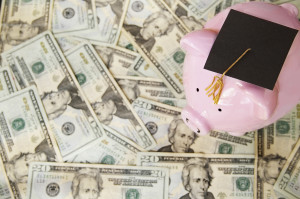AARP Eye Center
Are Lenders Driving Student Loan Borrowers Into Default?
By Eileen Ambrose, October 16, 2014 01:31 PM
Borrowers struggling to repay private student loans say they have little choice but to default because lenders won’t revise payments to make them affordable, according to a new report by the Consumer Financial Protection Bureau.

“We are hearing from consumers that they are driven into default because private student loan companies are not providing concrete loan modification options,” CFPB Director Richard Cordray said in a statement. “Struggling private student loan borrowers are finding themselves out of luck and out of options. Lenders and servicers must redouble their efforts to deal with these distressed borrowers.”
>> 8 Hidden College Expenses
Concern has grown over the rapid rise of student debt, which is not just a problem for twentysomethings. According to government figures, education debt and loan defaults have been growing fastest among those age 65 and up — potentially derailing retirements.
The CFPB report is based on more than 5,300 complaints the agency received about private education loans in the past year, a 38 percent increase over the year before. Complaints came largely from consumers who took out loans before the financial crisis, when lending standards were less stringent.
The agency says distressed borrowers complained that they received little information on loan modification programs that could prevent defaults. In some cases, borrowers were told they were ineligible for any affordable repayment plans. Borrowers also complained that they were transferred from one customer service representative to the next, getting conflicting or inaccurate information.
Nearly 2,000 of the complaints were lodged against student loan giant Sallie Mae, a 48 percent increase over a year ago. The firm recently divided its operations into two independent companies — Sallie Mae and Navient.
Sallie Mae says it has added a section to its website outlining steps borrowers can take as they transition from school to making payments. Among them are options for those having difficulty in keeping up with payments.“Our interests are aligned with our customers’ and that means helping them successfully manage their loans,” Sallie Mae spokesman Richard Castellano wrote in an email. “Feedback from all sources, including the CFPB portal, is valuable to us, and we use it to continually improve our practices.”
While federal loans have many payment alternatives for struggling borrowers, that’s not the case with private loans. Since 2005, borrowers can no longer get private loans discharged in bankruptcy court.
Rohit Chopra, the CFPB’s student loan ombudsman, says this inability to wipe out private loans in bankruptcy may have had unintended consequences. Lenders now have less incentive to work with troubled borrowers to avoid default, he says.
Chopra recommended that Congress determine whether private student loans should still have bankruptcy protection. One option, he says, would be to offer bankruptcy protection on loans from lenders that offer meaningful loan modifications.
>> Get discounts on financial services with your AARP Member Advantages.
The CFPB began taking complaints on private loans in early 2012, and each year the number has risen. Though some progress has been made in prodding lenders to improve customer service and other areas, problems facing distressed borrowers persist, the agency says.
The agency provides some tools to help, including a sample letter that borrowers can use to request reduced payments from a lender so they can meet their other living expenses.
Photo: Zimmytws/iStock
Also of Interest
- Getting a Student Loan? Your Interest Rate Just Went Up
- 8 Germiest Places -- Don't Touch That!
- Get Involved: Learn How You Can Give Back
- Join AARP: Savings, resources and news for your well-being
See the AARP home page for deals, savings tips, trivia and more.































































